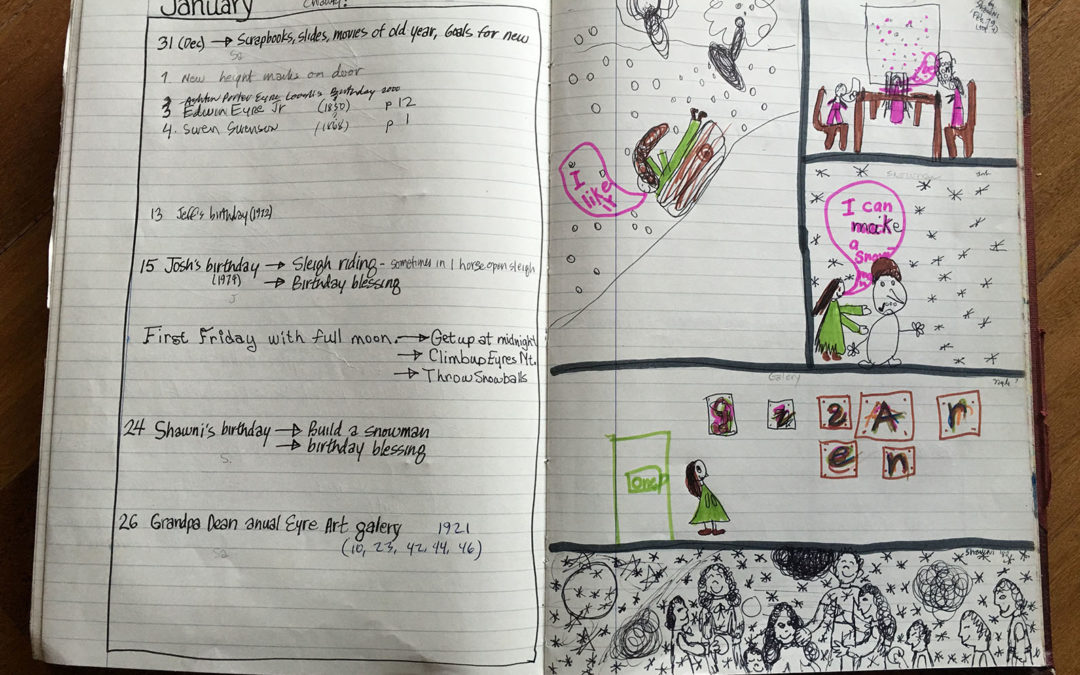Everyone, particularly every child, needs an identity larger than himself—something he belongs to, feels part of, gains security and protection from. It is kids who do not get this identity from families who are drawn to the rituals, tattoos, symbols and traditions of gangs or other substitutes for families.
Strong traditions exist in every lasting institution, whether it is a school, a club, a business, or a country. If families are to be lasting and permanent, they also need traditions. Traditions are the glue that holds families together. Kids love and cling to family traditions because they are predictable and stable in an unpredictable world.
Almost all families have traditions—often centering on holidays or other special occasions—but parents who come to realize the importance of traditions and their ability to teach values to improve communication, to give security to kids, and to hold families together…such parents can refine and redefine their family traditions and give them true and lasting bonding power.
We suggest that you start by assessing and analyzing your family traditions. What do you do on each holiday? Each family birthday? Do you have some weekly traditions—such as a special Sunday dinner? Are there some monthly traditions such as going over the calendar and the family’s schedule for the month ahead? Make a list of your yearly, monthly, and weekly traditions.
Then, as a family, ask yourself three questions: 1. How much joy, how much fun comes from each tradition? 2. What values are taught by each? 3. Are there some gaps—some months without a holiday or birthday tradition? With these questions in mind, revise and re-design your family traditions. Formalize them a little by “writing them up” on a chart or in a special book.
Here’s a sampling of what happened to us as we went through this reassessing process:
- We revised some traditions (For example, our Thanksgiving tradition had essentially been to eat way too much and watch football all day on TV so we decided to shift the emphasis to thanks by making a collective list [on a long roll of cash register tape] of all the little things we are thankful for. Each year we try to “break the record” for the number of things listed.
- We decided we needed at least one major family tradition each month—to look forward to and anticipate. Most of these centered on a birthday or holiday, but there was nothing in May or September so we started a “welcome spring day” (a hike) and a “welcome fall day” (a picnic).
- We listed all the traditions, by month, in a big, leather-bound book. A little description of each tradition appears on the left and a child’s illustration of that activity appears on the right.
- We worked some of our ancestors (the kids’ great grandparents) into our traditions because we wanted our children to have that extra identity of knowing where (and who) they came from. We wrote up some simple bedtime stories based on real experiences of these ancestors (especially experiences that illustrated honesty or courage or other values), and we now have a little birthday party for them, which includes “their story.”
Here are a few family traditions others have mentioned that we particularly liked:
- Bedtime “happy’s or sad’s.” As you tuck a child in bed ask, “What was your “happy” today? Your “sad?” Over the course of many evenings, you’ll learn a lot about your child’s friends, social situations, school, fears, etc.
- Sunday dinners. While the old family dinner concept may have pretty well lost out to fast food and over committed schedules, once a week is still realistic. Pick a day and reserve dinner. Use the time to talk about schedules for the week and then ask each other questions about feelings, dreams, priorities, and concerns. (This may become the weekly family meeting discussed earlier.)
- “1 to 10.” When kids have a hard time talking about their feelings—or where you’re getting just “yes” or “no” or “fine” answers to your questions, try the “ranking” technique. Say, “I’m going to mention five separate things to you and you rank how worried you are about them from 1 to 10.” “Ranking” works on everything from how much they enjoyed a date to how important they perceive various things to be. Once they’ve ranked something, it gets easier to talk and ask further “active listening” questions about whatever the subject is.
- One incident will illustrate the “staying power” and bonding influence of family traditions. On my (Richard’s) birthday in October, we had always raked huge piles of leaves with the kids and then jumped in them, stuffed them in our shirts, thrown them in the air and just generally had a wild time. We thought as the kids got older, their interest in such a frivolous activity would fade. On the contrary, as teens, the leaf piles just got bigger. Finally, one year, three of our children were away at school or living abroad. On my birthday, three birthday card-sized envelopes arrived. As I opened the first, a leaf fell out and a note, “Dad, I honored your birthday tradition. Here’s a leaf from my jumping pile. Don’t forget, even though I’m far away, I’m still part of our family. I love you.” Through my tears I opened the other two — and a leaf fell from each.
Editor’s note: This is the fifth article in a series of 10 where the Eyres are sharing the ten best parenting ideas they have come across during their three decades of writing to and speaking with parents worldwide. Each is coupled with the key parenting challenge that it helps to solve. The ideas are not in any particular order, but each represents a simple, practical “best practice” that can be implemented in any family. Most of them center on a “prop” or physical object that symbolizes the idea and makes it real and memorable.
